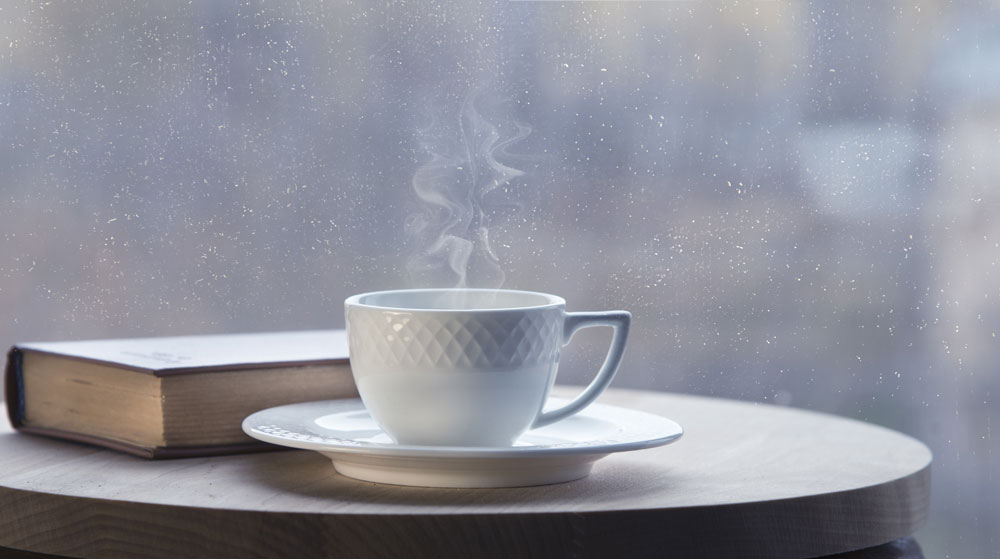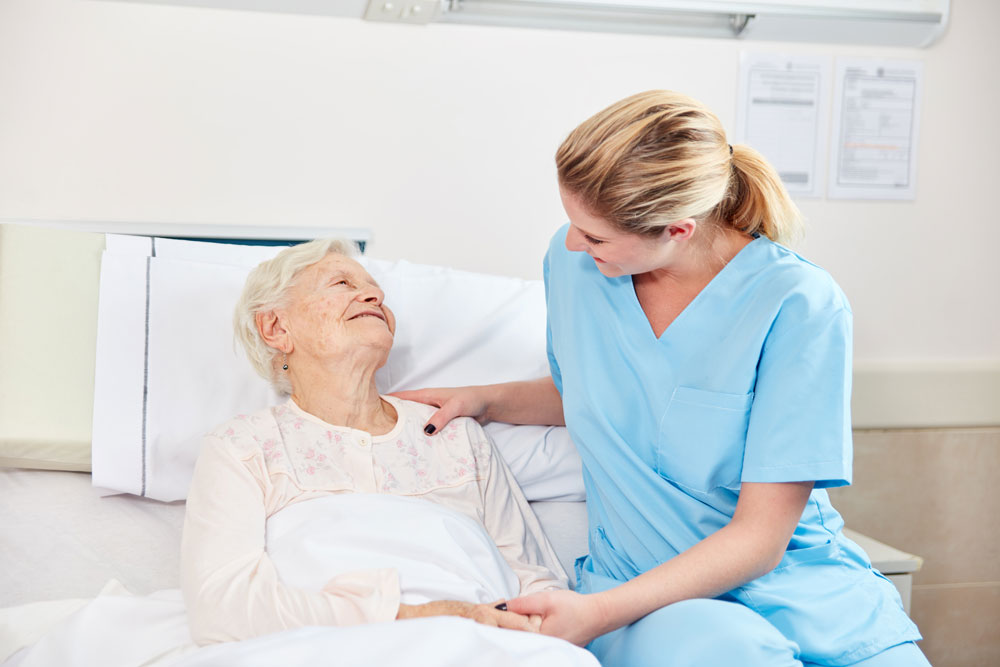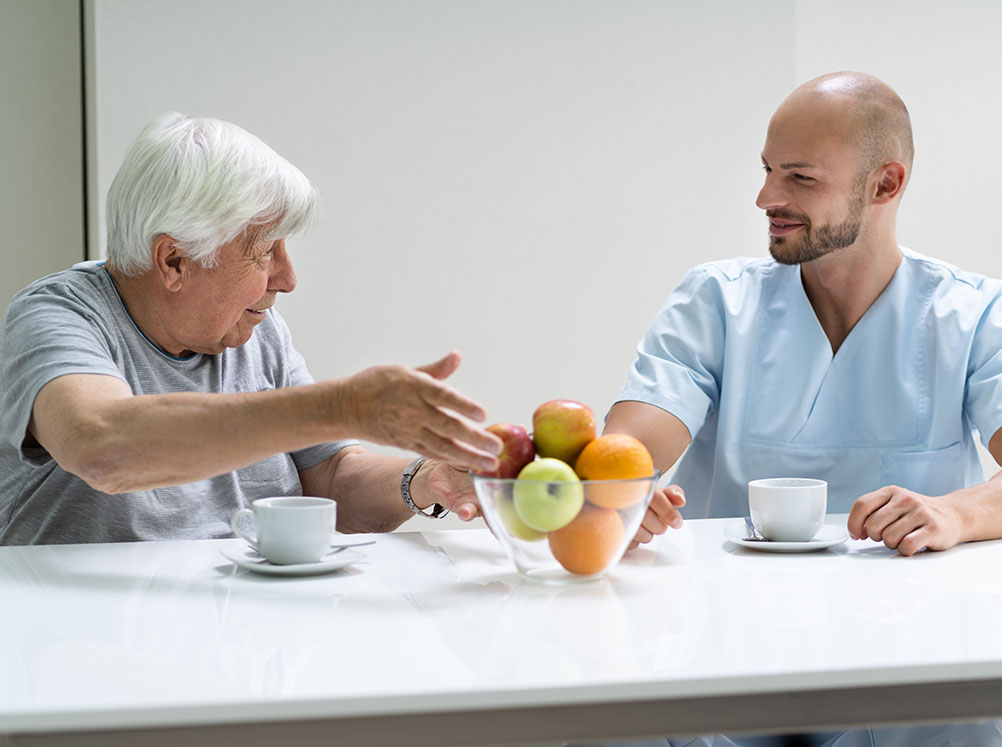Scent, environment and goods supply
This article is written from a Swedish perspective. Hopefully, it can inspire interested parties from other countries.
People emit smells, ranging from pleasant scents to unpleasant odors. Care for the residents, waste management, clothing care, and ventilation contribute to making the premises pleasant to stay in. With today's knowledge and opportunities, no one should have to live in premises where the smell of urine or other odors disturb the comfort.
 Foto: Mostphotos
Foto: MostphotosOdor
People emit odors, ranging from pleasant scents to unpleasant smells. To prevent the smell of urine or stuffiness, routines must be followed. Cleaning needs to be of good quality, laundry taken care of in time and garbage must be disposed of. Similarly, residents often get help with personal hygiene. Odor can be an indicator of how well a unit is functioning.
Creating a comfortable and odor-free environment in elderly homes is crucial for both the residents and the staff's well-being. Unpleasant smells can negatively impact the quality of life and create a less welcoming atmosphere. Therefore, it's important to address these challenges effectively. In this article, we explore various methods to prevent unpleasant odors in elderly homes.
A good friend told me that her father-in-law had not been feeling well. He was often depressed, and the ward smelled of urine. She thought that it was not surprising given that many people wet themselves. One day when she arrived at the home, the father-in-law seemed more energetic, freshly shaved, well-groomed, and the smell of urine was gone. It turned out that a new assistant nurse who had become the contact person for the father-in-law had started. New staff can create a new dynamic in the team.
A residence can never be entirely odor-free. The smell of food and coffee can contribute to appetite and comfort. Older people can have problems with incontinence, and therefore it may temporarily smell of urine or feces. Regular toilet visits and support with personal hygiene reduce the risk of unpleasant smells. No one should be forced to live where the smell of odors stings the nose.
Regular cleaning and airing
One of the most basic measures to prevent bad odors is regular and thorough cleaning. This includes cleaning floors, bathrooms, and common areas. Additionally, it's crucial to ensure air circulation in all rooms to reduce the risk of stagnant air that can contribute to bad odors.
Use of odor absorbers and air purifiers
Odor absorbers can be strategically placed around the elderly home to neutralize unwanted scents. Air purifiers with HEPA filters can also be effective in filtering out particles and odors from the air, creating a fresher indoor environment.
Personal Hygiene and Laundry Management
A high standard of personal hygiene is crucial, especially in places where many people live close together. Regular baths and changes of clothes help keep bad odors at bay. Also, effective management and washing of clothes and bedding play a significant role in maintaining a fresh environment. Try to find ways to reach residents who are reluctant to change clothes and maintain hygiene. If necessary, bring in guidance to find ways to get through.
Preventive measures against incontinence-related odors
Incontinence can be a source of unpleasant smells. By using high-quality incontinence products and ensuring they are changed regularly, the risk of leakage and associated odors can be reduced. Training the staff on proper handling and care is also crucial.
Preventing unpleasant odors in elderly homes requires a multifaceted approach that includes regular cleaning, good ventilation, use of odor absorbers and air purifiers, maintaining personal hygiene, and effective measures against incontinence-related odors. By working strategically, elderly homes can create a more welcoming and comfortable environment for both residents and staff.
Supply of Goods
An elderly home needs many goods and services to function. Good routines save both money and the environment and reduce the risk of products being thrown away. Dressing materials, protective equipment, medicines, and food have limited shelf life. Good ordering routines reduce the risk of wasting resources.
Some protective equipment must always be in stock or can be ordered at short notice. Masks, visors, protective clothing that covers the arms are examples.
In the industry, "just-in-time" is applied for the supply of goods. They do not want to have large stocks as it costs in terms of space and it ties up capital for the business. Having good suppliers is very valuable.
On one occasion, the staff failed to get home tube feeding, and one of the residents risked being without. The operations manager made three calls and received deliveries from three different suppliers the next day. Often it is simply a matter of commitment. Now, elderly homes need to plan further ahead so that the residents are not affected.
An area where there is often far too much equipment is dressing materials, catheters, and more. It is common for residences to have to discard because the best before day has passed. Operations with clear instructions for which material should be in stock and at what time it should be ordered save both money and the environment. Soap, hand sanitizer, gloves, paper towels, toilet paper, kitchen paper, cleaning products, dish soap, and similar products are other product groups that are purchased. Storage of both chemicals and dressing materials requires thought. Dressing materials should be stored dry and dust-free. Many chemicals should definitely be kept locked up. The product sheet provides guidance on which ones.
A weakness is often the deliveries of medicines. Who receives and signs the delivery so that they do not stand in a corridor. Drug deliveries to elderly homes are often theft-prone. Having safe routines where the medicines are locked in the medicine room is of great importance.
Food is another area where large purchases are made. Many foods have limited shelf life, and it is important not to order more than what is consumed. It is a matter of choosing which foods should be offered. The residence may have requirements to purchase organic products for a certain proportion of purchases. Many times there are requests from the residents for a particular food.
It is common for elderly homes to buy ready-made food. The handling of food is a vulnerable chain. When it comes to hot food, it should not be kept warm for more than an hour. This applies from the time it is delivered from the kitchen until it is served. As for chilled food, it must be kept at refrigerator temperature during the entire transport and in storage at the elderly home until it is heated. It requires the operation to have full traceability when it comes to storage, in case someone should get food poisoning.
Incontinence aids are sometimes in excess with several months of consumption in stock of protection that no one uses anymore. It makes it difficult to find what you should have in the storage. Incontinence aids are individually tested and should be treated as such.
Elderly homes often have people who are responsible for ordering different types of goods. It may be a good idea to gather all these into a purchasing council to discuss what is a reasonable lead time for different product types. They can then give each other tips and ideas on how they work with orders. With knowledge, the supply of goods becomes safer and the risk of over-ordering decreases.
Go through which suppliers you have and what it costs. There may be suppliers who invoice for goods and services that are not beneficial to the business. It may be possible to buy products cheaper elsewhere. Here, many elderly homes are bound by procurements that limit the possibilities.
More and more people and businesses sort and recycle waste. It is not uncomplicated in an elderly home, but many try and still find ways to recycle a lot of packaging and other things. One area that is special is the handling of hazardous waste. There must be safe routines for handling discarded medicines and when it comes to sharp and cutting waste.
Waste
We have been working to achieve the global environmental goals to be achieved by 2030 for several years now. The EU is discussing whether the requirements should be tightened even more to save our planet. Elderly homes can help achieve sustainability goals.
There are large quantities of goods purchased for an elderly home. In terms of volume, incontinence protection, washing labels, gloves, and other protective equipment take up a lot of space. The operation buys large quantities of cleaning agents, hand sanitizer, soap, laundry detergent, and surface disinfectant. Food is another extensive area.
In addition, lamps, batteries, kitchen appliances, and other electronics are purchased. It is delivered in packaging of cardboard, glass, plastic, or metal. Newspapers and other paper waste from the residents and the operation also occur. There is some hazardous waste such as drug residues and sharp cutting.
There are elderly homes that have come a long way in terms of working with waste sorting. There are elderly homes where, despite being good at sorting at home, the staff are forced to throw garbage unsorted in the elderly home.
It is also about what is bought in and how it is used to extend durability as much as possible. Here it can be a matter of influencing procurement and taking care of what exists. There are often obstacles in the design of the premises. But for those who are creative, there are many times low-hanging fruits where recycling or other measures that contribute to a more sustainable world could be implemented without too extensive efforts.
Environmental Impact
Often when we talk about the environment, we think of the physical environment. In this section, we mean the climate impact that an elderly home generates.
Of course, there are many factors that can have a negative impact on the environment, but there are factors that can be influenced. A large amount of disposable products are used and the amount of waste is relatively large. Many times the operation depends on what is delivered to the operation from central procurement and there are not always clear environmental requirements in these procurements. Medicines, for example, are not environmentally labeled.
Many businesses strive to become climate-neutral, but there are missing necessary products for an elderly home today to be climate-neutral. There are, as far as I know, no incontinence protections that can be reused. The residents are entitled to comfortable heat and lighting that reduces the risk of falling. The lighting can also be regulated to promote a natural circadian rhythm.
Food is increasingly in focus when it comes to environmental impact. Organic

Aktuellt i media
- 2025-09-01 04:00 09 Mat och måltid
-
2025-08-29 04:00
04 Bemötande
Working with participation is an obvious quality factor in all care for fellow human beings.
info Foto: Mostphotos
Foto: Mostphotos - 2025-08-25 04:00 14 Läkemedelshantering
-
2025-08-21 04:00
06 Dokumentation
With a good implementation plan, the chances increase for our care to be good!
info Foto: Mostphotos
Foto: Mostphotos - 2025-08-18 04:00 16 Sjukdom och död
- 2025-06-26 04:00 04 Bemötande





